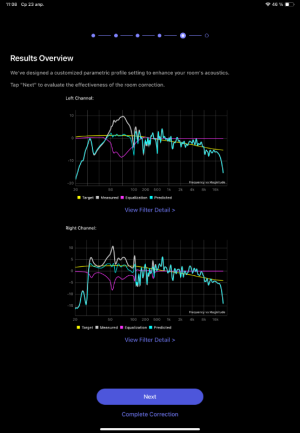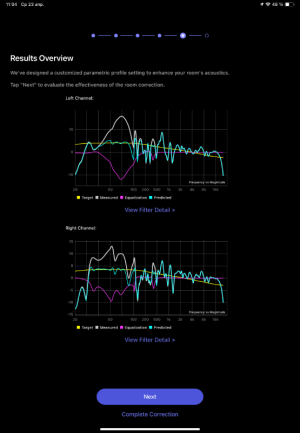A good room correction program needs to separate frequencies below shroeder frequency and above it . It demands different measurements techniques and microphone placement for different frequencies and cant be done fullrange from listening position. This is a fact and it needs to be understood by users and developers.
Maybe it could be a good idea to introduce gating techniques for corrections of the speakers , measured near each L/R speaker, one at a time , at 300 Hz -20000 Hz ?
And maybe introduce one room correction graph 20-300 Hz , measured from listening position, and one measurements graph with gating 300-20000 Hz made for closer microphones measurements of each speaker ?
Measurements and corrections above 300 Hz needs measurements nearer only one speaker at a time, because of the precedence effect. By introducing gating techniques above 300 Hz it would be possible for many people to correct 300-20000 Hz in normal living rooms if measuring 1 meter from each speaker.
It seems like WiiM with FDW is trying to make roomcorrection fullrange 20-20000 Hz from listening position like dirac does it. Unfortunately it doesnt work ( not for dirac either ) above 300-500 Hz, where one needs to do measurements with gating technique near each loudspeaker.
If WiiM could do this , separate the needs for different measurements tecniques between 20-300 Hz, and 300-20000 Hz, (or 20-500 Hz for some SBIR corrections , and 500-20000 Hz, ) it would be very advanced and it would work even better than Dirac. It would be as advanced as REW and simply sensational for the price.
This would demand three measurements ( one from listening position 20-300 Hz , and at least one for each speaker 1 meter from each of them using gating technique 300-20000 Hz )
WiiM team - read more here how to do it from the Swedish acoustical expert I-or:



